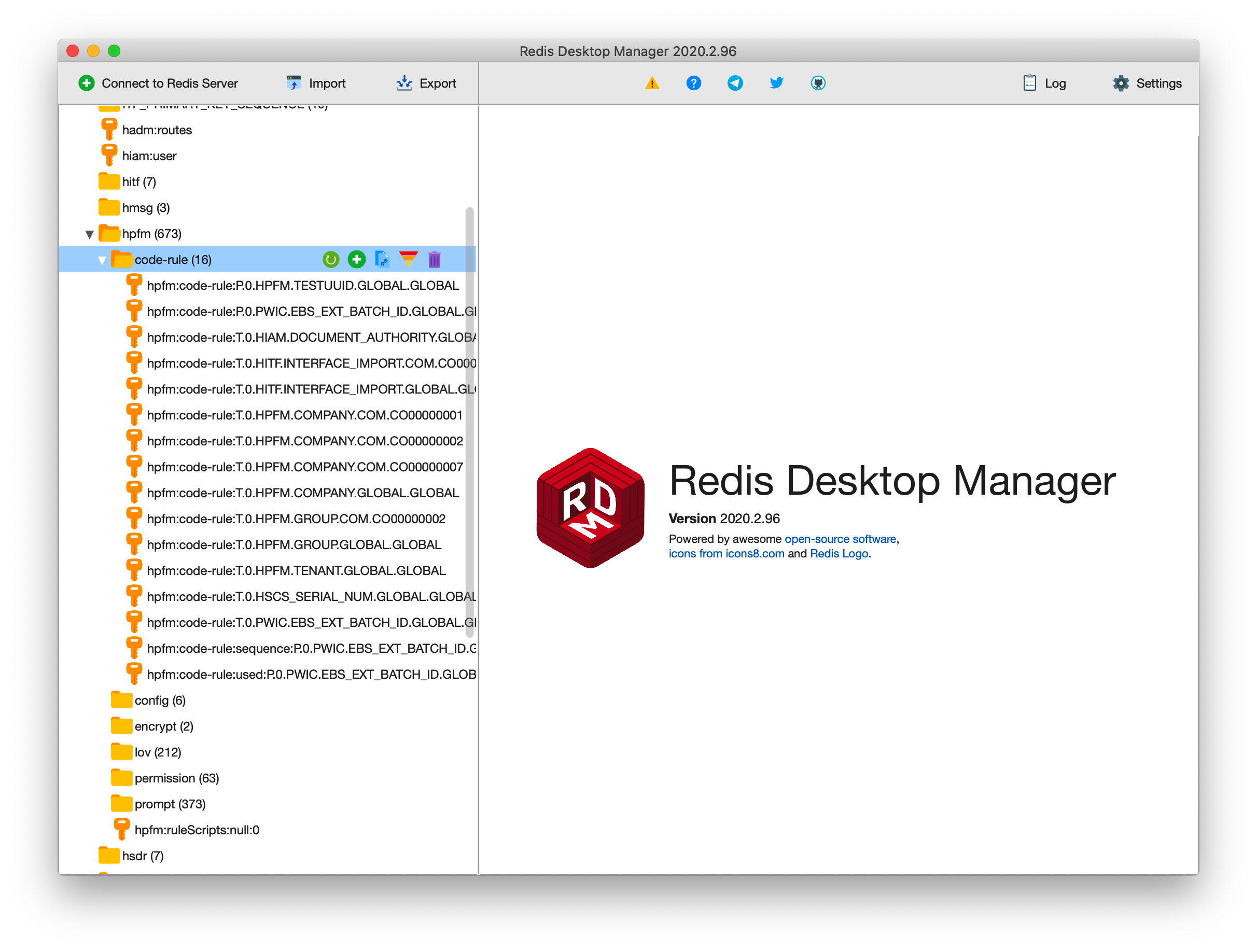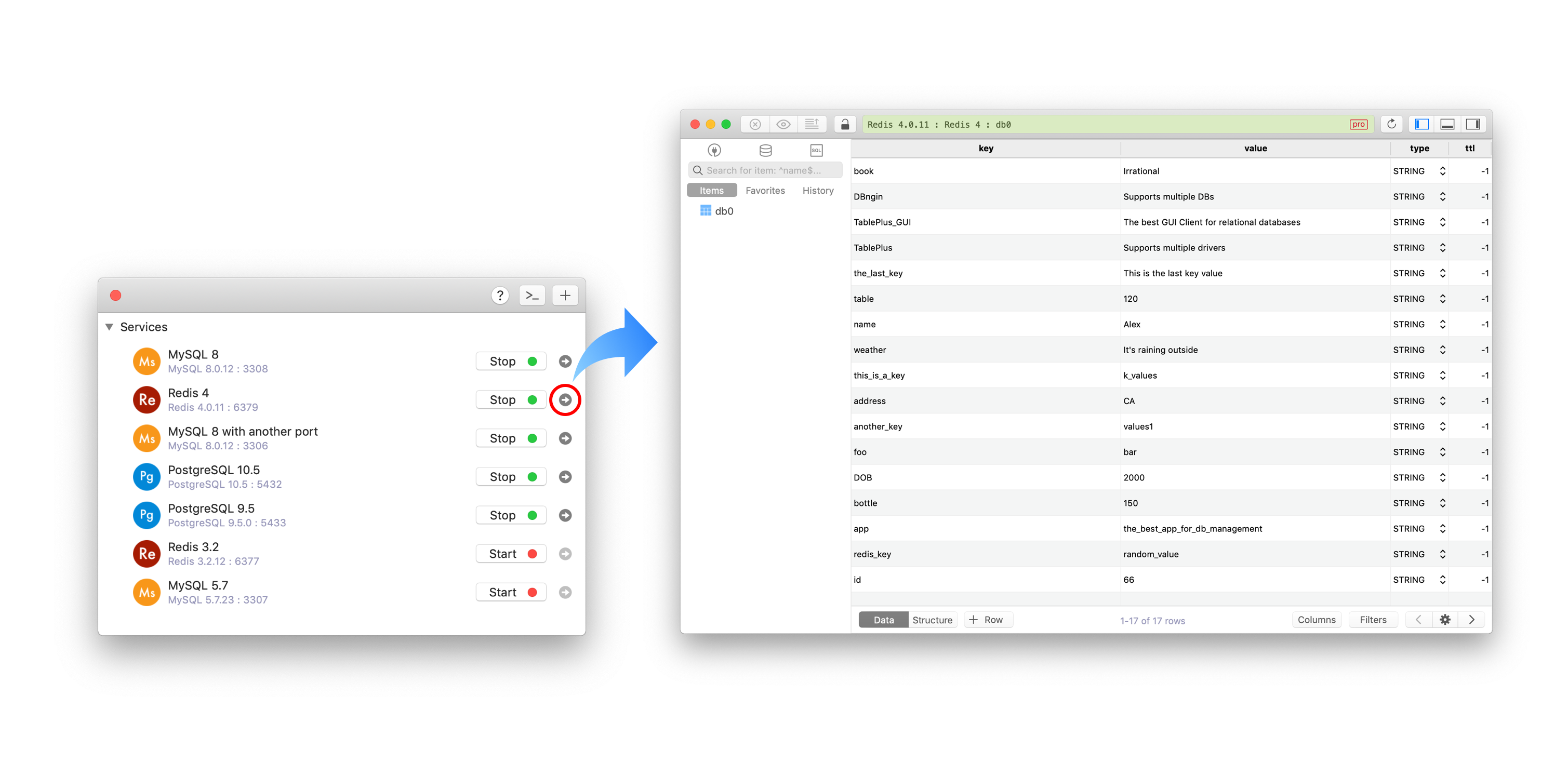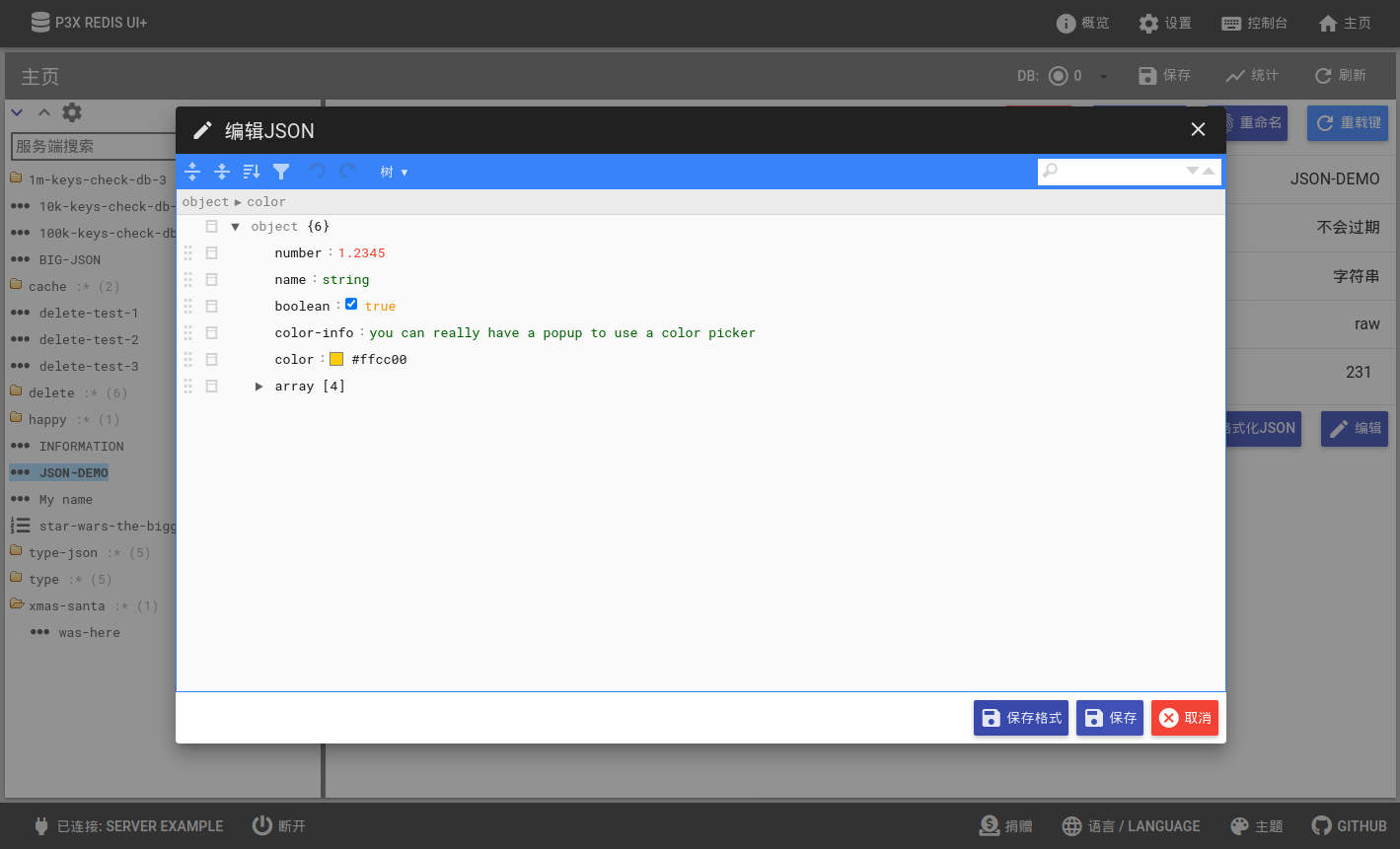Redis Desktop Manager is a cross-platform open source Redis DB management tool. It allows you to connect simultaneously to multiple Redis databases or instances, inspect and modify your data and use an interactive terminal. You can also search for keys across multiple databases and view a system console which logs all Redis commands. GitHub is where the world builds software. Millions of developers and companies build, ship, and maintain their software on GitHub — the largest and most advanced development platform in the world.
Redis uses a standard practice for its versioning: major.minor.patchlevel. An even minor marks a stable release, like 1.2, 2.0, 2.2, 2.4, 2.6, 2.8. Odd minors are used for unstable releases, for example 2.9.x releases are the unstable versions of what will be Redis 3.0 once stable.
Unstable
This is where all the development happens. Only for hard-core hackers. Use only if you need to test the latest features or performance improvements. This is going to be the next Redis release in a few months.Stable (6.0)
Redis 6.0 introduces SSL, the new RESP3 protocol, ACLs, client side caching, diskless replicas, I/O threads, faster RDB loading, new modules APIs and many more improvements.Docker
It is possible to get Docker images of Redis from the Docker Hub. Multiple versions are available, usually updated in a short time after a new release is available.
- Redis Desktop Manager Redis Desktop Manager (RDM) is a fast open source Redis database management application for Windows, Linux and MacOS. This tool offers you an easy-to-use GUI to access your Redis DB and view keys as a tree, CRUD keys, execute commands via shell.
- Redis is an open source (BSD licensed), in-memory data structure store, used as a database, cache and message broker. It supports data structures such as strings, hashes, lists, sets, sorted sets with range queries, bitmaps, hyperloglogs and geospatial indexes with radius queries.
- QuickRedis is a free forever Redis gui tool. It supports direct connection, sentinel, and cluster mode, supports multiple languages, supports hundreds of millions of keys, and has an amazing UI. Supports both Windows, Mac OS X and Linux platform.
You can also use the free Redis Cloud service from Redis Labs.
*Other versions

Old (5.0)
Redis 5.0 is the first version of Redis to introduce the new stream data type with consumer groups, sorted sets blocking pop operations, LFU/LRU info in RDB, Cluster manager inside redis-cli, active defragmentation V2, HyperLogLogs improvements and many other improvements. Redis 5 was release as GA in October 2018.
See the release notes or download 5.0.10.
*Other
Historical downloads are still available on Google Code.Scripts and other automatic downloads can easily access the tarball of the latest Redis stable version at https://download.redis.io/redis-stable.tar.gz, and its respective SHA256 sum at https://download.redis.io/redis-stable.tar.gz.SHA256SUM. The source code of the latest stable release is always browsable here, use the file src/version.h in order to extract the version in an automatic way.
*How to verify files for integrity
The Github repository redis-hashes contains a README file with SHA1 digests of released tarball archives. Note: the generic redis-stable.tar.gz tarball does not match any hash because it is modified to untar to the redis-stable directory.
*Installation
*From source code
Download, extract and compile Redis with:
The binaries that are now compiled are available in the src directory. Run Redis with:
You can interact with Redis using the built-in client:
*From the official Ubuntu PPA
You can install the latest stable version of Redis from the redislabs/redis package repository. Add the repository to the apt index, update it and install:
*From Snapcraft
You can install the latest stable version of Redis from the Snapcraft marketplace:
Are you new to Redis? Try our online, interactive tutorial.
Friday, I received a snazzy new M1 Macbook Pro in the mail. This article outlines how I was able to set it up for doing web development. We'll set up Homebrew, PHP, MySQL, Composer, and Laravel Valet. Let's jump in!
The previous article outlines first impressions from the perspective of someone upgrading from a 2013 mac.
Setting up an M1 mac for PHP development is not much different than other macs. Unless you're using Docker, which doesn't work on the new ARM processor (yet — they're working on it). I expected to have way more problems being an early adopter, but Apple has done a wonderful job with their Rosetta 2 translation layer. It mostly feels invisible, so (except for a few terminal commands like homebrew) you hardly even notice it is there.
Homebrew
First, we'll need to install Homebrew. They don't have an ARM-compatible build ready yet, so this is where we'll need to use some Rosetta flags on the command line.
Install Rosetta on the command line with the following:
/usr/sbin/softwareupdate --install-rosetta --agree-to-license
Next, add this function to your .zshrc file. It makes a nice arm alias for running commands with x86_64 architecture flags. Perhaps calling it x86 would be better? Shoutout to Matt Stauffer for posting this.
You'll need to run the homebrew commands with this prefix for now. We can copy the script from their site, add our arm prefix, and homebrew should install!
PHP, MySQL, and Composer
Now that homebrew is installed, the rest of the Valet install is pretty much stock (except for Redis, which we'll get to in the next section).
PHP
Just run arm brew install php — it's that easy! You may want to restart your terminal after this.
MySQL
Normal besides the arm prefix again.
Composer

Run the download script from Composer's website, then move the PHAR file to the bin folder. Also we'll add the global composer vendor folder to our system path.
Now add the following line to your .zshrc file
Valet and Redis
Installing Valet should work as normal now. Run the following commands:
After that, I also ran cd ~/Code && valet park .
Installing Redis

Redis presented the only real speed bump I've encountered thus far. It installs via brew, but starting the Redis server doesn't work correctly (even though brew says it does). Until then, we can start the server manually.
Redis Tool For Mac Osx
First, run arm brew install redis to install it.
Next, install the Redis PHP extension with PECL — pecl install redis.
Redis Tool For Mac Installer
Starting the Server
Normally you'd use arm brew services start to start Redis (and at login), but it's not working yet. That command just runs redis-server under the hood. For some reason, this command only works with sudo right now. The workaround is to run this to start Redis server as a daemon:
Cleaning up after PECL (optional)
By default, PECL plops a new extension='redis.so' line at the top of the main php.ini file. I prefer to move this line to its own extension file. These steps are optional, but it's more in line with how extensions should be loaded in modern php versions.
Remove the extension='redis.so' line that PECL added at the top of /usr/local/etc/php/7.4/php.ini.
Then create a file at /usr/local/etc/php/7.4/conf.d/ext-redis.ini with these contents:
After doing all of this, I'd recommend running valet restart. Enjoy developing Laravel apps on your new mac!
Redis Client For Mac
If you encounter any problems or have any thoughts about this process, reach out to me on Twitter, I'd love to hear about them!